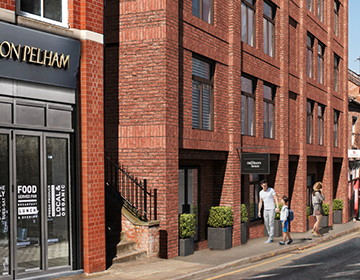How does student property compare with other asset classes on returns?
Over the last two years, there has been a huge surge in student housing investment activity and student accommodation is certainly big business in the UK right now. Last year alone saw over £2 billion of investment in this booming property sector.
Since 2011, student accommodation has outperformed all other traditional property assets and has been the strongest growing investment property market in the UK. It has also continued to be one of the most resilient investment sectors, with rental incomes and property values remaining stable or increasing. The attraction of the student accommodation sector has been driven by structural undersupply and positive rental growth year on, despite the economic downturn.
Fig 1 Total returns year to September 2013: Source Knight Frank
Investing in student accommodation offers a long-term investment option, as the property is highly likely to be in constant demand throughout the calendar year. Typical rents are significantly higher for student properties, than a comparable BTL property in the same city.
What’s more, the domestic student population is continuing to expand, with an extra 30,000 university places offered in 2014. UCAS have reported they are expecting an all-time high of 500,000 applications this year.
Students will pay more for high quality, well-maintained accommodation than for the traditional run down and neglected shared houses, because there really isn't a big price difference between poor and high quality accommodation. The vast majority of students want to live in high quality, shared accommodation, with good internet access and affordable bills, so the better quality properties are highly sought after.
Whilst the number of students is rising, so are the costs of rent for student accommodation, providing investors with much higher yields. A HMO (House in Multiple Occupation) property can provide an 8% minimum cash yield, though we provide a typical 13% cash yield,
including 5% capital appreciation.
The average gross cash rental yields for the student property sector in the North West were 13% for the first three quarters of 2014, well ahead of the 6.37%* forecast for average student property yields across the UK, for this year. (*Source: Savills Report: The UK's student housing sector, May 2014). What’s more, the yields are 6-7 per cent higher on average than the buy-to-let market as a whole, which stood at 6.2%* between April and June 2014.
I believe it is realistic for numbers of international students in higher education to grow by 15%-20% over the next five years. There is no cap on the number of students who can come to study in the UK and the structural undersupply will continue to remain in all key university cities ensuring excellent sustainable rental growth.
*Mish Liyanage is Managing Director of the Mistoria Group






.png)







Comments